The azulejos of Sevilla
Since I was a child I have memories of these beautiful tiles or azulejos that my mother used to source, mostly old and some new, for our home in Andalucia. The names of the factories were Mensaque y Rodriguez , Ceramicas Santa Ana, Ceramicas Santa Isabel (just closed ) and Sevillarte which has a very thorough website where you can read about all the techniques and history.
All our bathrooms have azulejos, each bathroom a different color, mine are blue and green with intricate woven leaves and stalks. When I was little I used to run my fingers over them feeling the knots, bumps and twists. Apart from the bathrooms my mother made poetic fountains in the patios, using just a beautiful ancient pair of azulejos and a stone drinking trough for the cattle. Some of our floors are mosaics of small painted blue tiles and simple antique mud ones that she would buy from gypsy dealers or junk yards all over the countryside.
Above : one of our fountains and mosaic floors made with old tiles.
I continued surrounding myself with azulejos, every country I moved to I would take a tile or ten to use . I use them to decorate my dinner party tables and to put hot pots of food on. I also incrust them in the walls like poetic accidents that happen when you only have one perfect tile and not two hundred. In the 90’s I used to buy them from an old lady squatter in a crumbling palacio in Sevilla known as La Casa de los Gatos or The House Of The cats. This incredible ancient building was unoccupied except for this very old lady who lived in one of the ground floor rooms and took care of the dozens of cats that lived there. Everything was full of weeds and rubble, the gate locked with a heavy chain, but somehow she opened one of the side doors to the street and you could come in a buy an 18 th century tile for a few pesetas, that way, one tile at a time, she fed herself and the cats. I still have those tiles .
My friend Florence Maeght bought some small ones which we hand-carried to Paris and she embedded them in the asphalt of her garden. A simple idea which looks so pretty and sunny and makes me smile each time I look at it, even under the most miserable rainy day like today.
Fast forward 2 decades and azulejos are being sold, one by one, in the most fashionable antique dealers and lifestyle shops in Sevilla and Madrid. They are no longer cheap…prices go from 50 euros to 150 euros for a single azulejo depending on the design and century .
Last time I was in Sevilla my sister Sylvia took me to the newly opened Museo De Ceramica de Triana /Triana Pottery Center (TSC) , well worth the visit if you are in Sevilla : The Triana Pottery Center (TSC) is the realization of a municipal project designed to preserve the memory of one of the latest ceramic factories that have been active in our city until very recently.
The old factory Ceramic Santa Ana has undergone a careful process of rehabilitation, which has retained many traditional elements of the factory and has shaped new spaces where different activities will take place: visits to the old installations, to the permanent collection of ceramic , temporary exhibitions, etc., plus artisanal workshops are devising to revive the Triana pottery tradition.
In comparison to the wood and metal that are most frequent in the Nordic-European world, clay was the material used in the Mediterranean area for crafting household implements and pottery as well as many decorative architectural elements. Although glazed pottery originated in the Roman Empire, its production increased dramatically in Triana/Sevilla during the period of Islamic rule, particularly when Sevilla became one of the capitals of the Almohad Empire in the 12 th century.
During the consequent Christian era, which began in Sevilla in 1248 and owning to the smooth relations with the kingdom of Granada, which would continue to be under Muslim rule for another 250 years, this tradition was revived and strengthened in Sevilla, specially with regard to architectural applications.The earliest azulejos in the 13th century were alicatados (panels of tile-mosaic). Tiles were glazed in a single colour, cut into geometric shapes, and assembled to form geometric patterns. Many examples can be admired in the Alhambra of Granada. below is an example of alicatado from the 13 th century which can be found in the Alhambra.
During the Mudejar period which refers to the Muslims who remained in Spain after it was reconquered by the Christians (13 th, 14 th, 15 th century ) ceramic works covered and lined the floors and walls of edifices.
The ceramic works reflected the geometrical designs inherited from the Muslims as well as the naturalist forms of the Christians, showcasing a mixture of flora, fauna, coats of arms and other heraldic symbols.
With the cuerda seca or “dry rope” method characterized by the separation of the enamel colors by means of a fine line of grease and some string which disintegrated when baked, and the reflejo dorado technique or “lustre” technique, brushes became the pictorial instruments associated with adorning pottery, tiles and crockery. The technique called Cuenca was developed in the 15 th century.
Here an example of cuerda seca tile from the shop CoCo Sevilla ( more information below)
Mudejar ceramics reached new heights in Seville with the arrival of the Italian potter Niculoso Pisano (died Seville 1529). Pisano painted tiles in the new Italian style of the Renaissance and also manufactured a semi-industrial tile called arista or press-moulded glazed reliefs tiles.
These techniques were introduced into Portugal by king Manuel I after a visit to Seville in 1503. They were applied on walls and used for paving floors, such as can be seen in several rooms, and especially the Arab Room of the Sintra National Palace . The Portuguese adopted the Moorish tradition of horror vacui (‘fear of empty spaces’) and covered the walls completely with azulejos.
During the industrial revolution the englishman Charles Pickman ( 1808-18930 ) started his empire as an importer of English industrial china in Cadiz, but soon set up shop in Seville. He purchased the former monastery of La Cartuja and started up his English factory there. The production style at La Cartuja represented a radical turn in local ceramic art, importing a new business model, assembly line production, technology, specialized labour, raw materials, product catalogues and sales strategies. There was a prolific and fertile dialogue between La Cartuja and the Triana factories from the outset with the consequent mutual enrichment . La Cartuja continues to make beautiful tableware and we still have many of their sets.
This below is a beautiful detail of one of their 19 th century tiled walls, on view at the Museo De Ceramica de Triana.
Below : my friends Martin Garcia and Natalia del Aguila posing in front of the wall of samples at the old Pickman ceramics factory in Seville, which is now the Museum of Contemporary Art or CAAC.
This last visit to the barrio of Triana where the Museum and tile factories are was a bit sad because so many of these wonderful places had just closed and with each closing it is a little bit of precious tradition, craft and history that disappears. If I had to build or redo a home I would get all my azulejos from one of these institutions or from the wonderful antique azulejo shop in the center of town facing the Palacio De Pilatos called CoCo Sevilla.
Here below is the impressive collection of azulejos for sale at this unique little shop. The French owner, Mr Didier Leportier, has every single type of tile dating back to the 16 th century…from cuerda seca to reflejo dorado and aristas. He is warm,welcoming and enthusiastic and will spend the time showing you his treasures. A must !
This one below is a 16 th century ceiling tile.
Below: walking on the streets of Seville : one of the many uses of azulejos
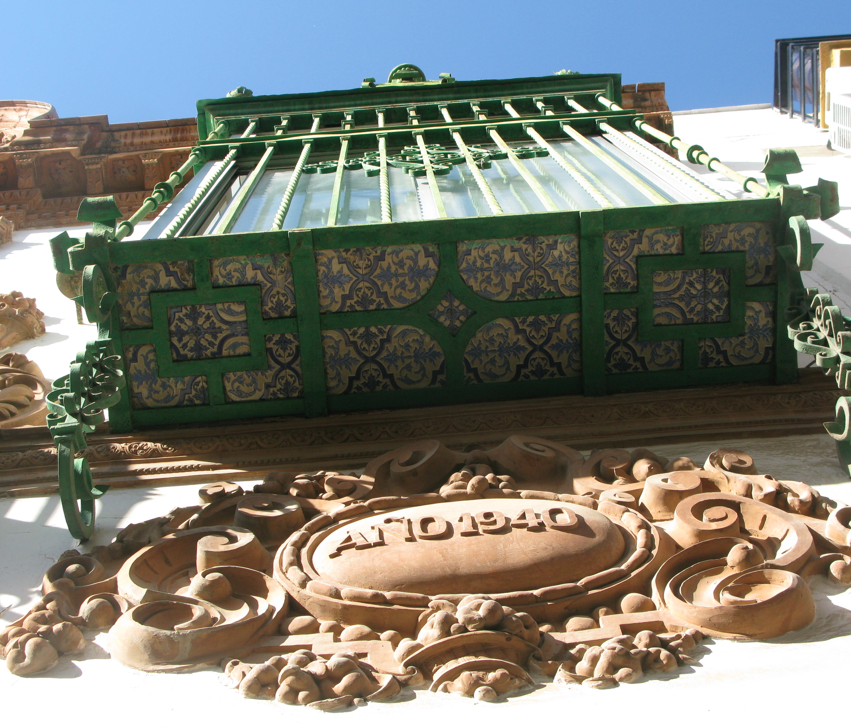 All photographs by fashionsphinx.com
All photographs by fashionsphinx.com

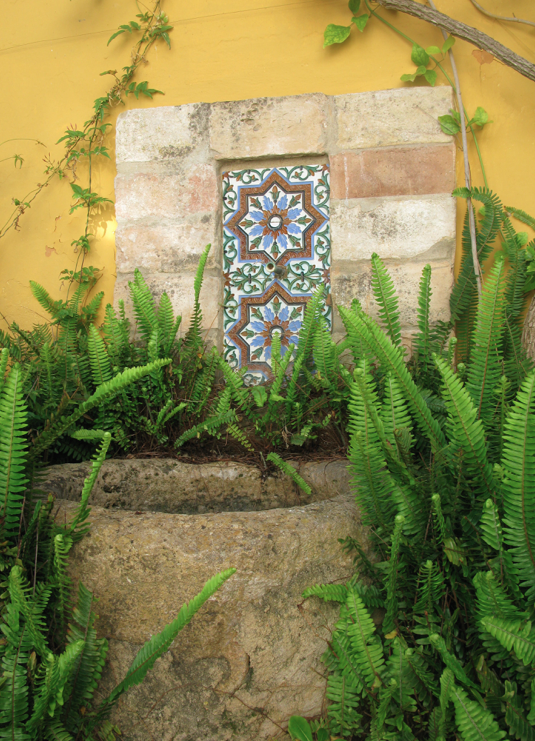
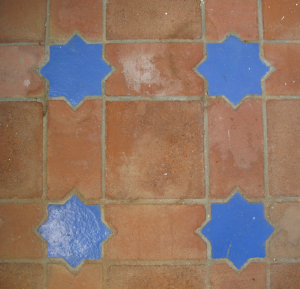

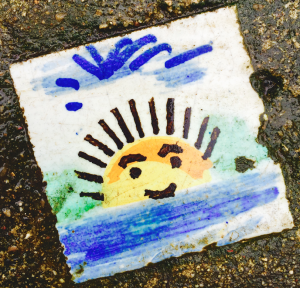
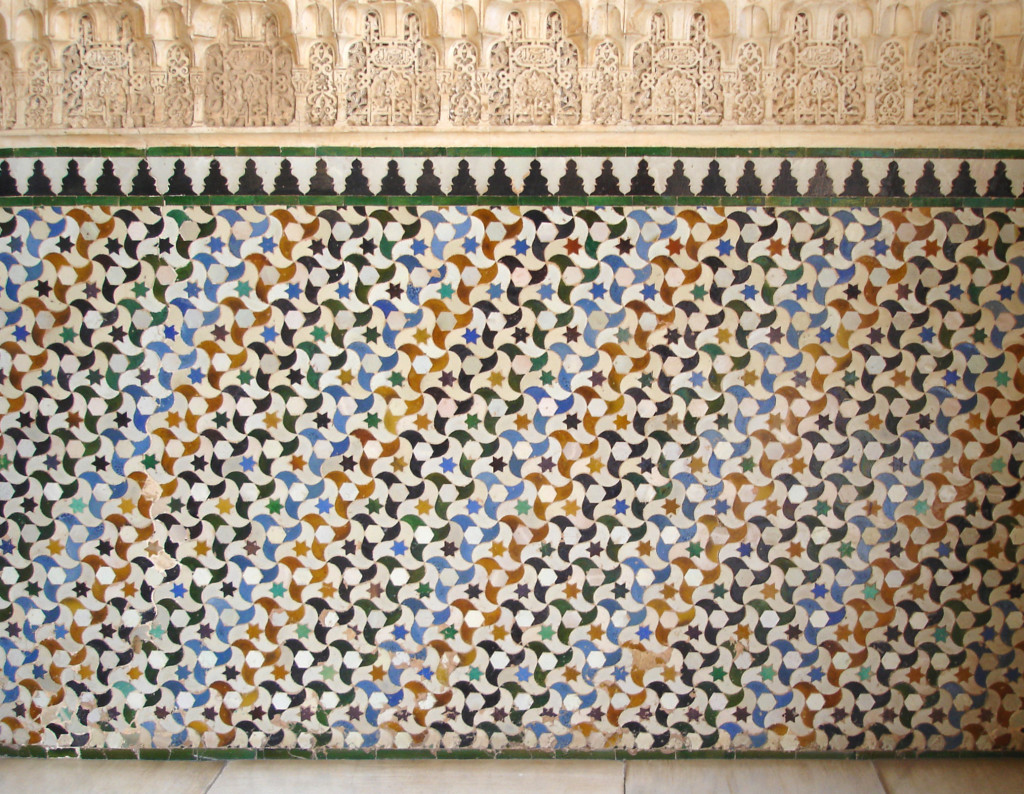
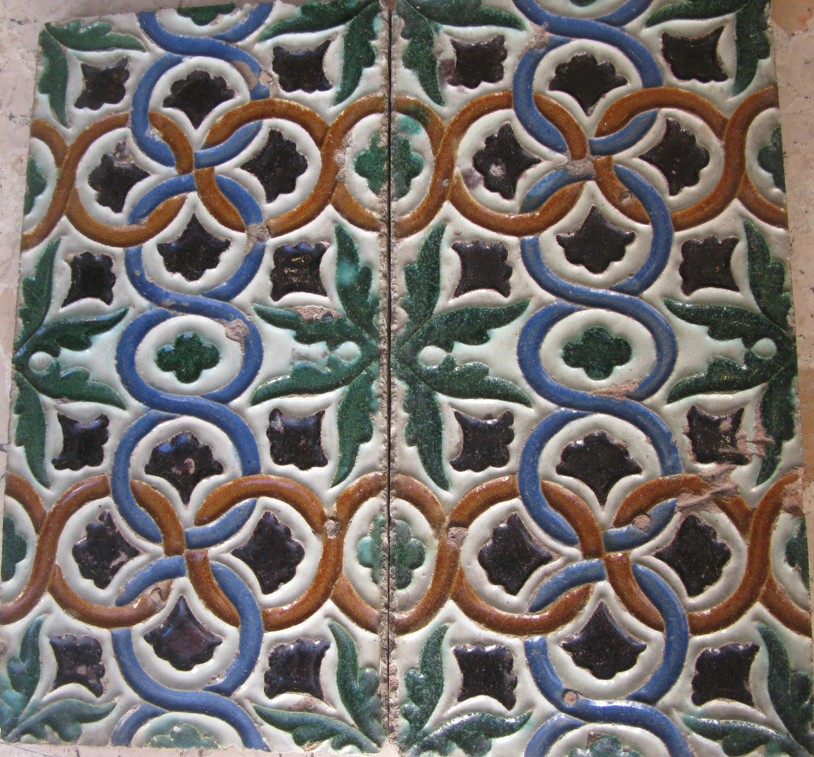
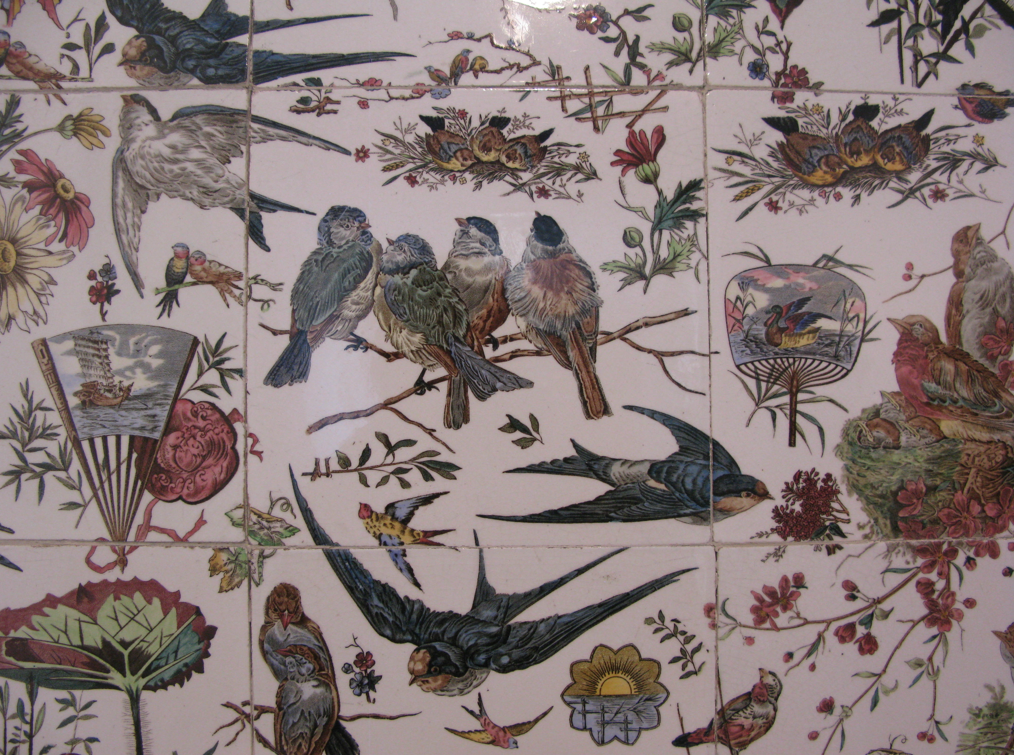
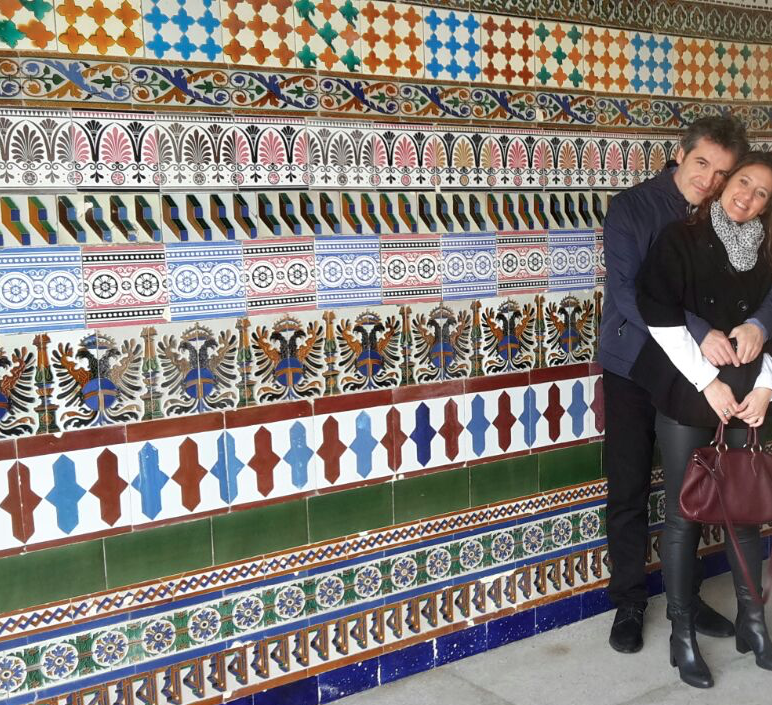
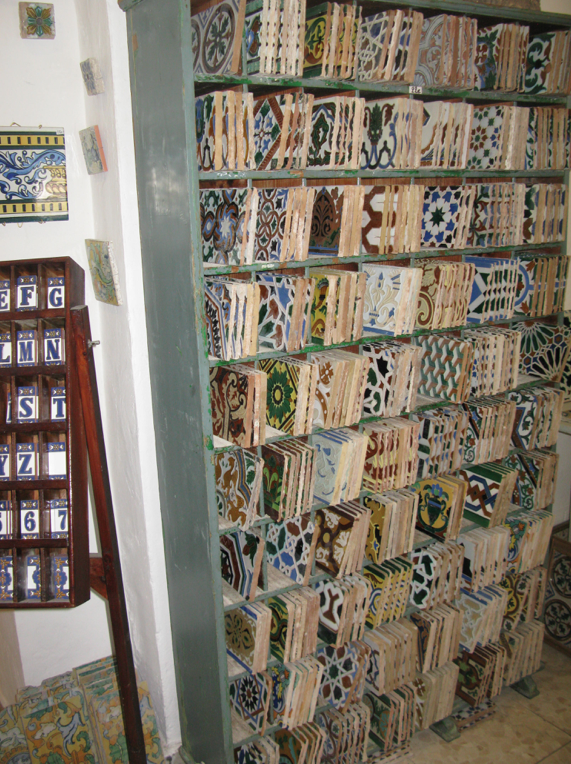
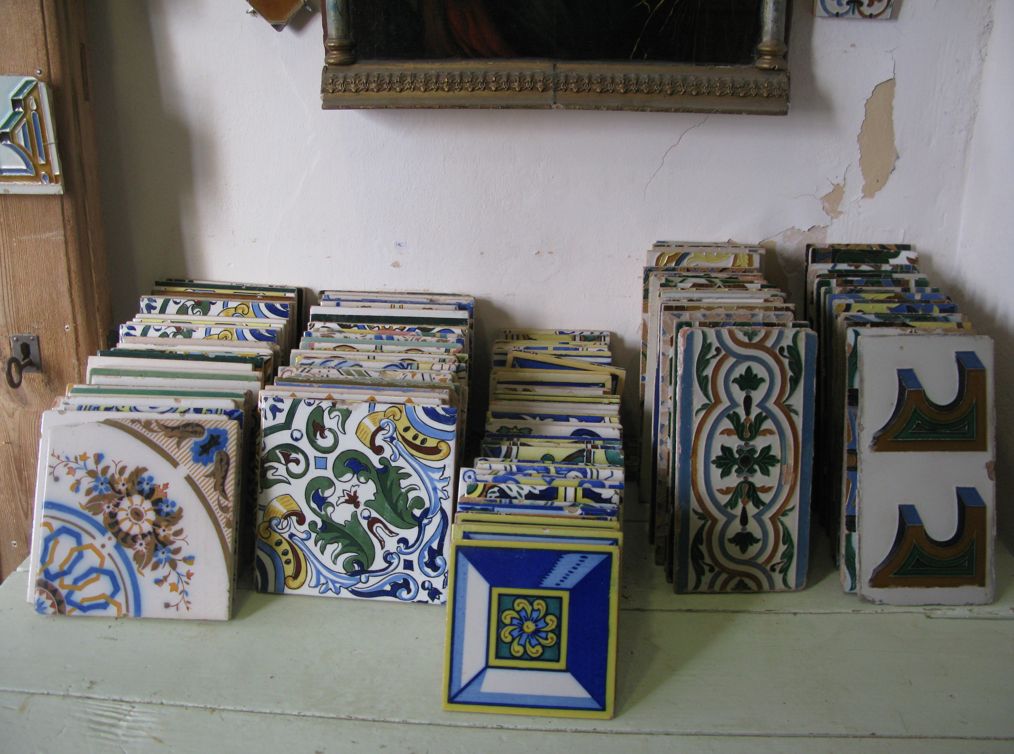
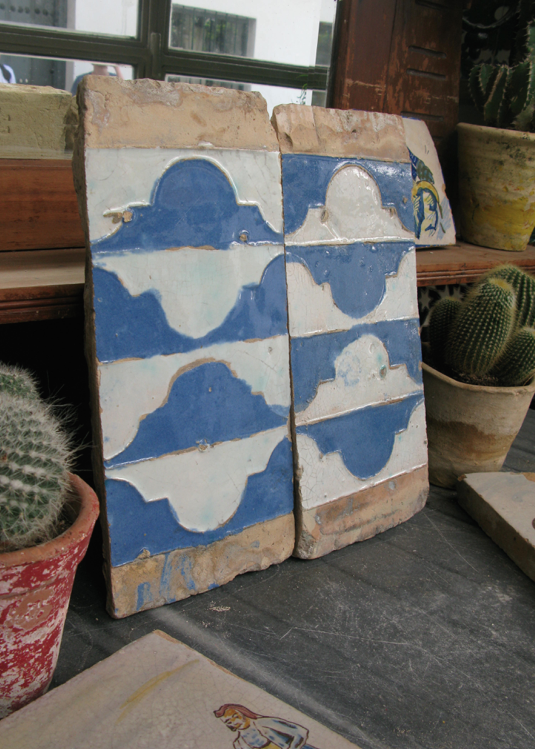
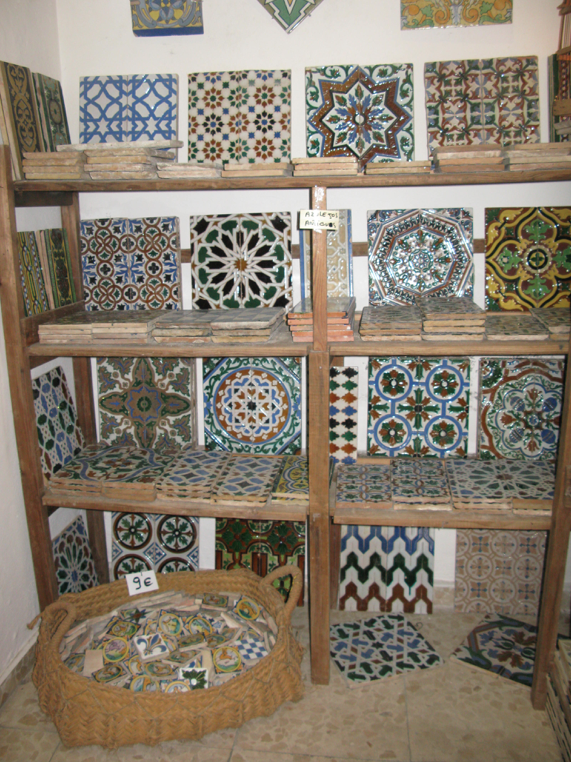
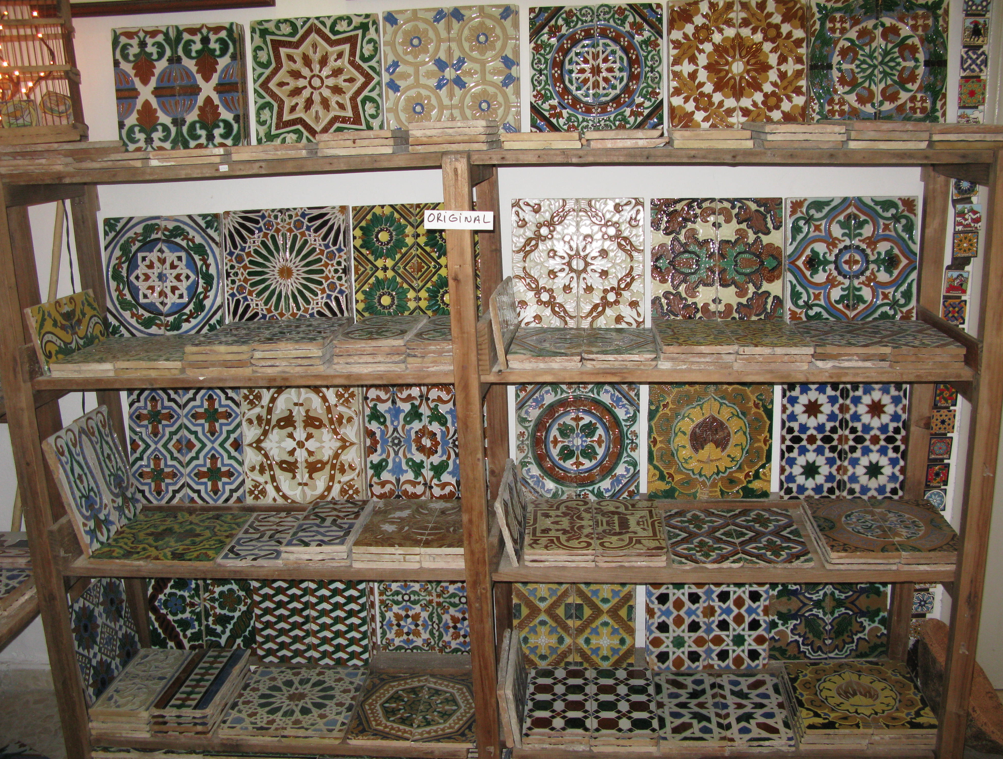
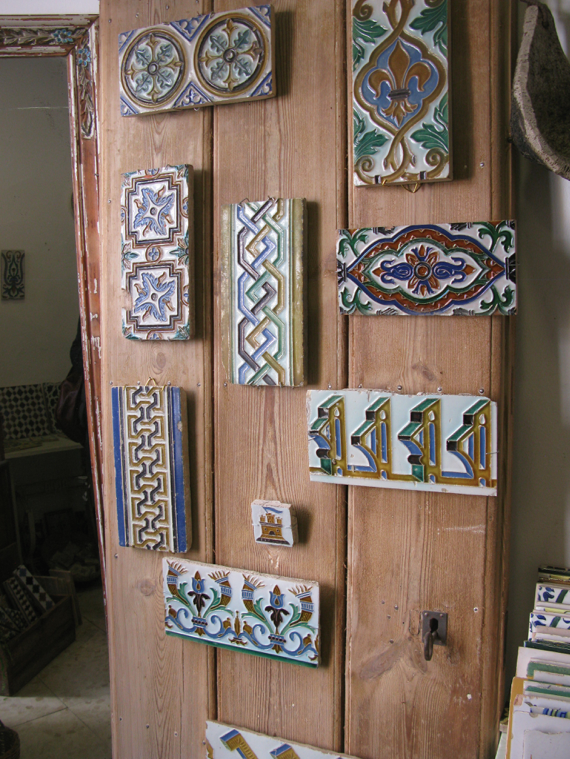

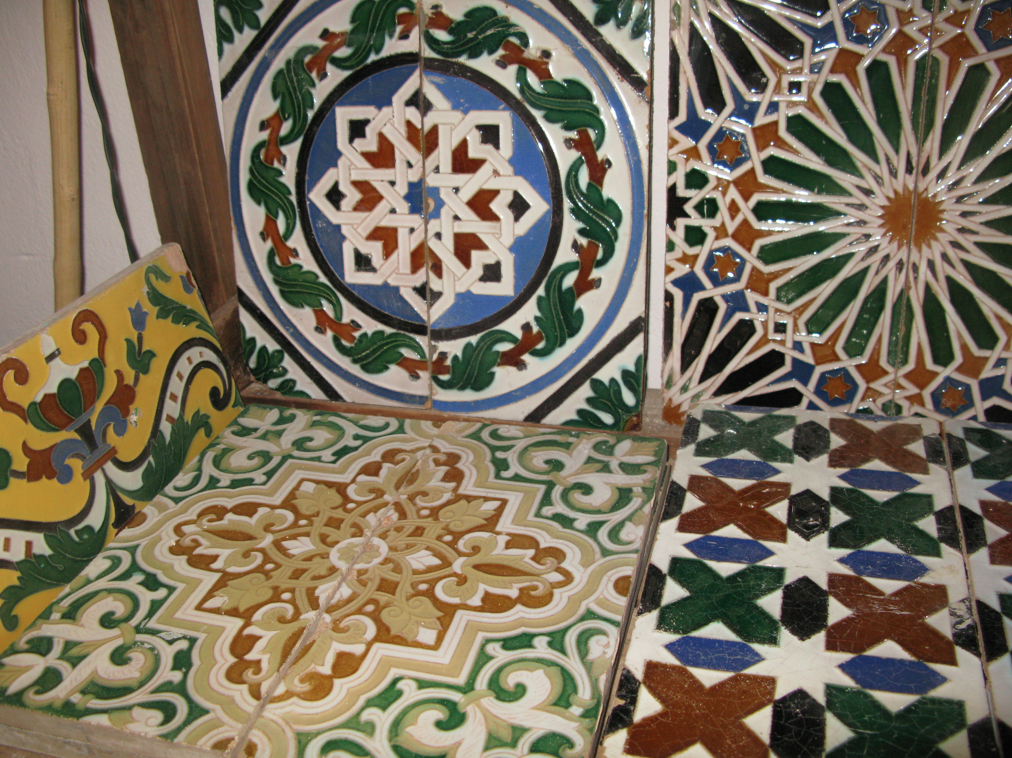
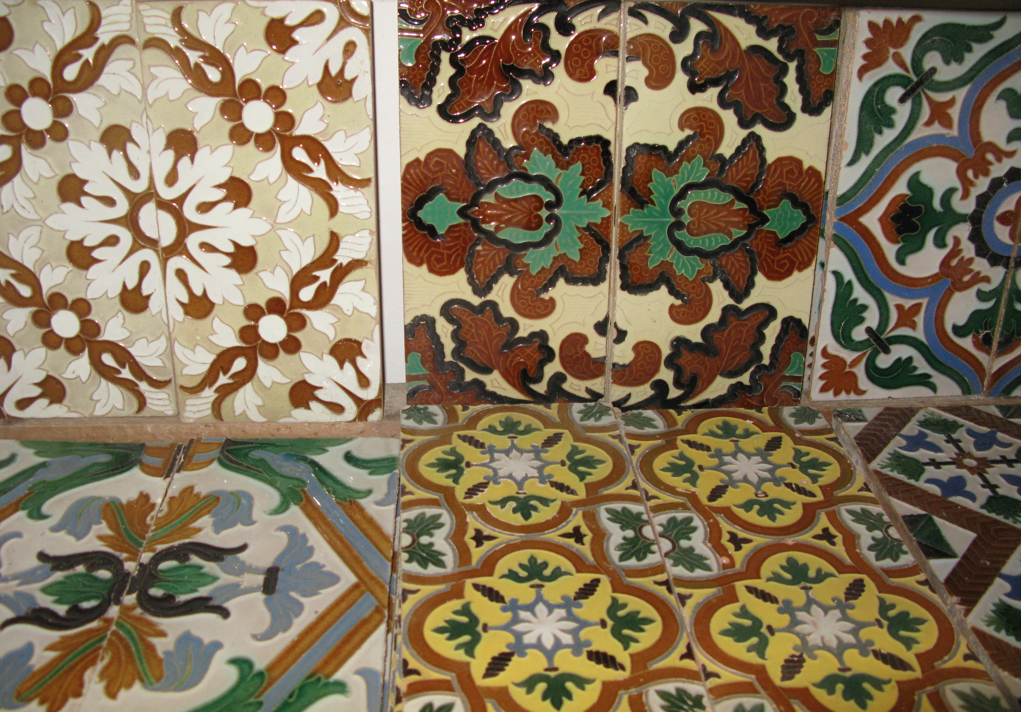
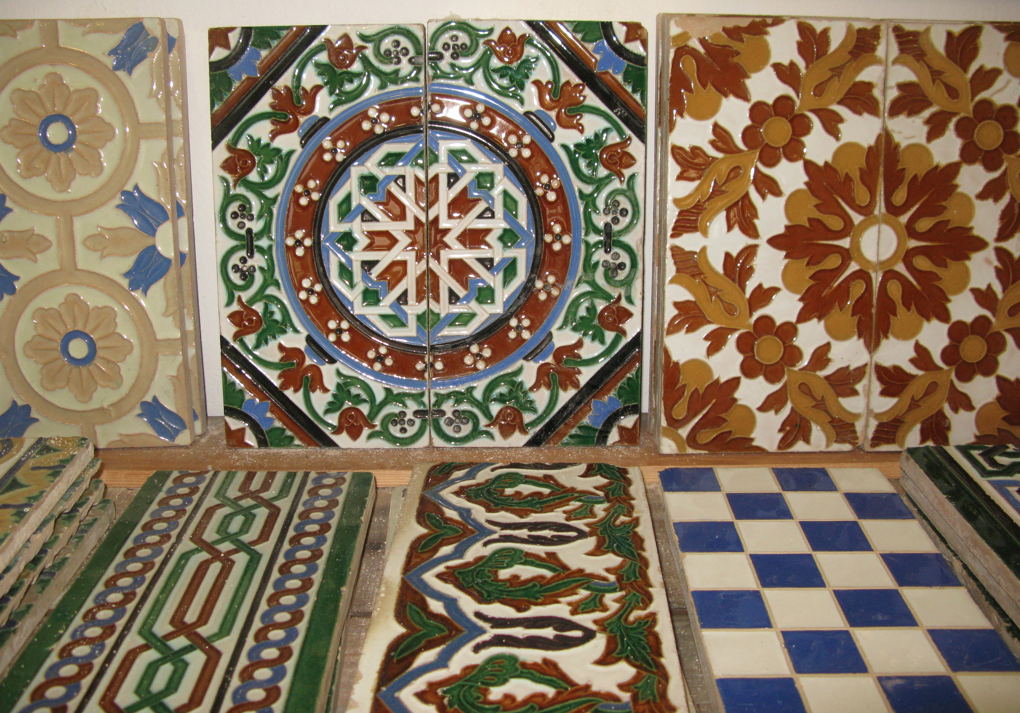
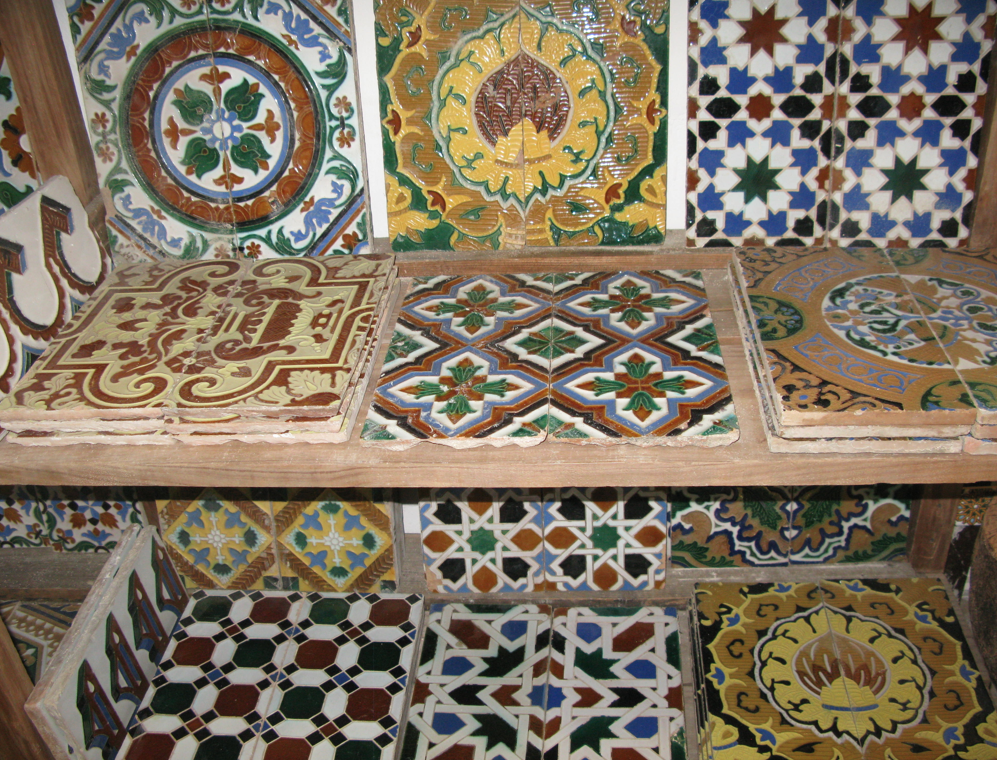

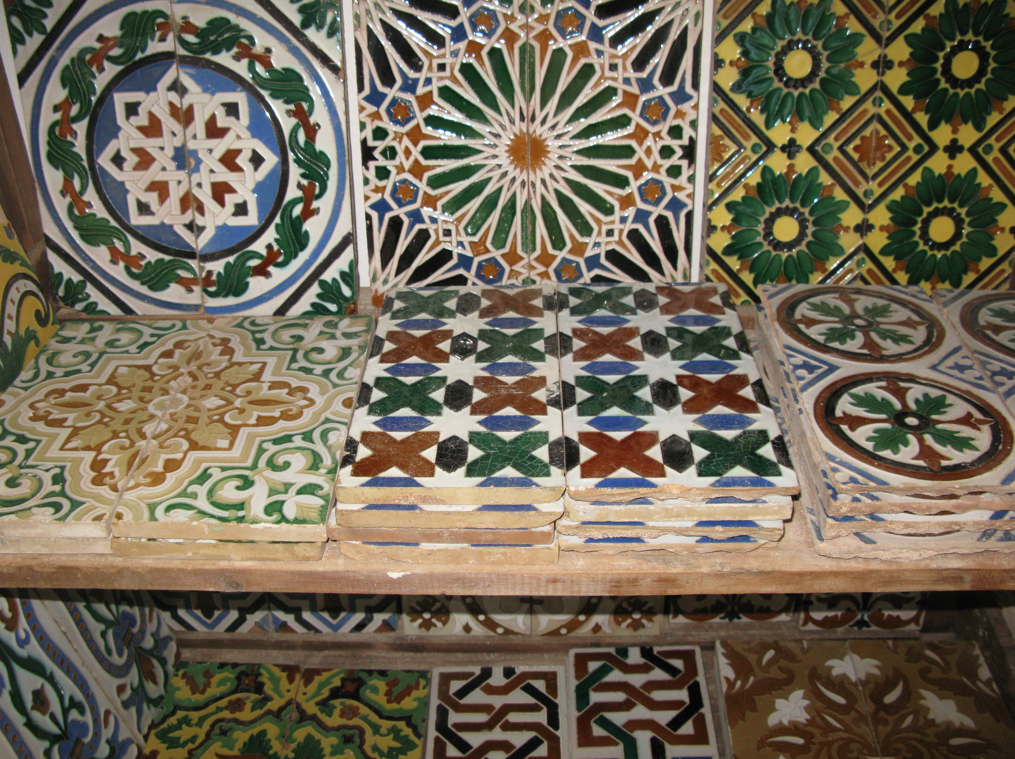
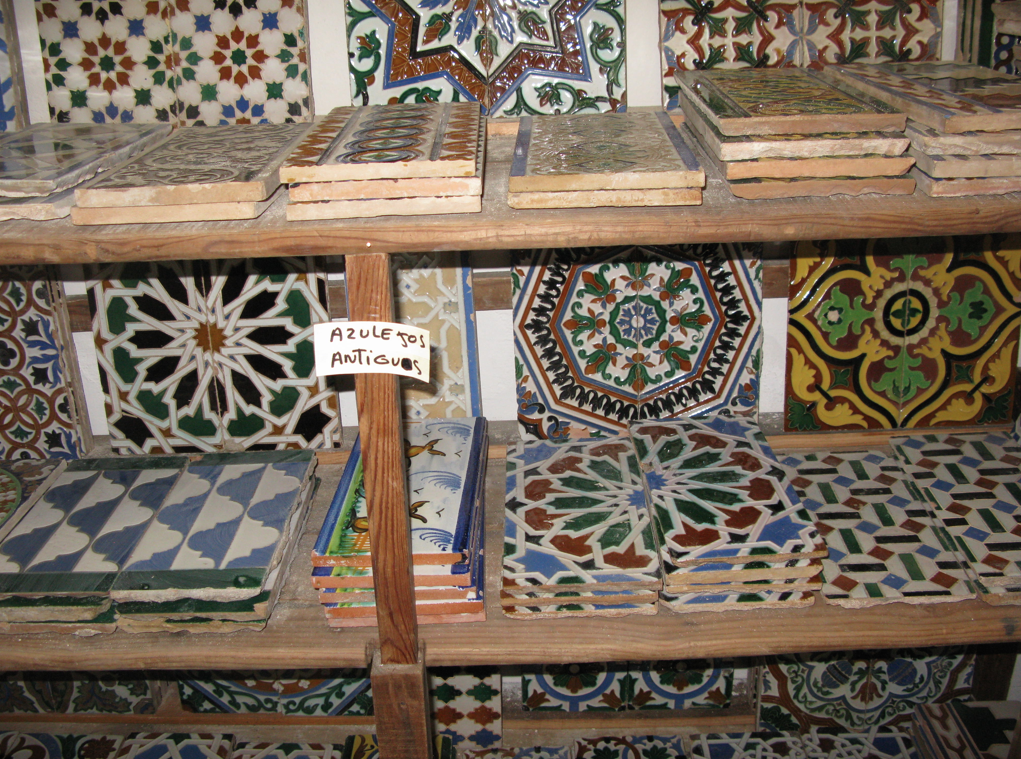
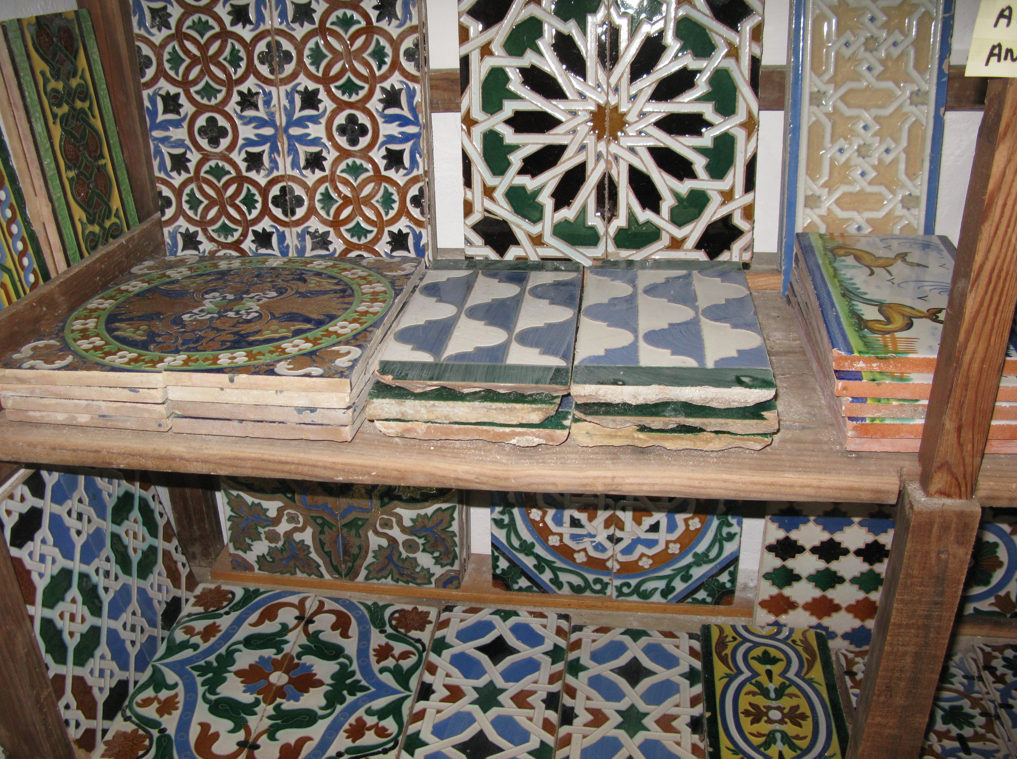
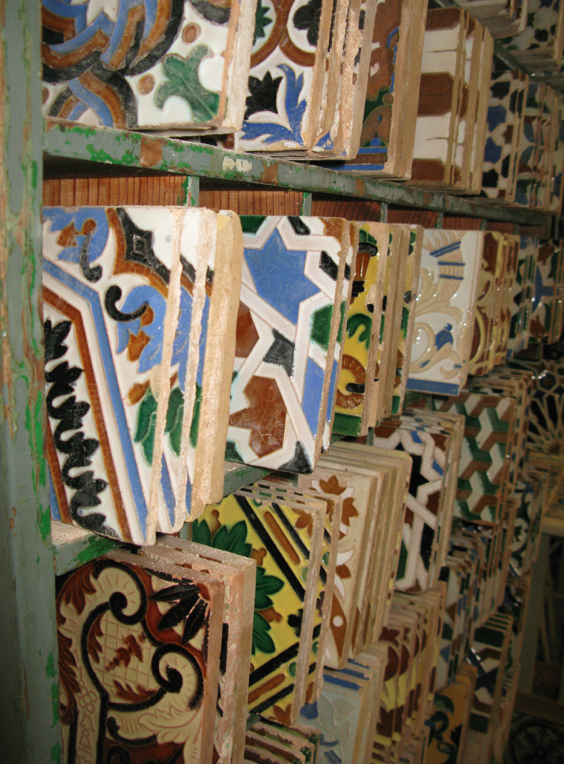
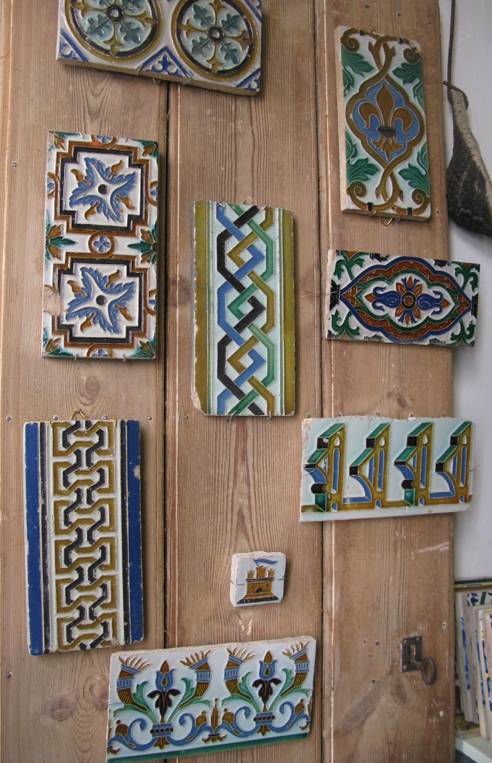

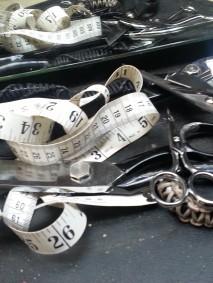

He disfrutado muchísimo con tu relato con las fotos de los azulejos.
Un abrazo
Milagros
Muchas gracias Milagros !
fashionsphinx
Love this. I can think of a million things to do with them.
Remember when a pet died, your Mother used to make a Little cross with 6 tiles and hang it on a tree….
indeed !